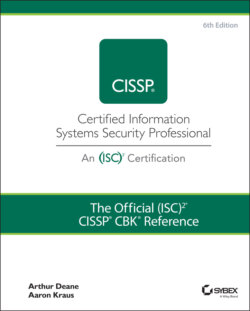Читать книгу The Official (ISC)2 CISSP CBK Reference - Leslie Fife, Aaron Kraus - Страница 29
Availability
ОглавлениеThe third and final principle of the CIA Triad is availability. Availability is the concept focused on ensuring that authorized users can access data when they need it. In enterprise environments, the concept of availability entails providing assurance that legitimate parties have timely and uninterrupted access to the systems and data that they need to do their jobs. Threats against availability can interfere or even halt an organization's business operations. An extended disruption of critical systems and data may lead to reputational damage that results in loss of customers and revenue.
Related concepts that should be considered alongside availability include the following:
Accessibility refers to the ability and ease of a user to use a resource or access data when needed. This involves removing barriers for authorized users to access these resources and data. For example, consider a file that's stored on your company's internal network drive. As long as the file is intact and the network drive is up and running, that file can be considered available. However, if someone were to move that file to a protected folder on the shared drive, you may lack the required permissions to access that file — the data is still available but is no longer accessible.
Usability refers to the ability of a user to meet their needs with available data. If you have ever needed to edit a Google doc (or any other file) and noticed that you have been granted only read-only permissions, then that file was absolutely available but lacked sufficient usability.
Timeliness refers to the time expectation for availability of information and resources and is the measure of the time between when information is expected and when it is available for use. Ensuring timeliness requires that data is available to authorized users within an acceptable period of time. For cloud services and other situations that involve a third party managing data, timeliness is a key factor that must be agreed upon and documented in service level agreements (SLAs).
There are many threats to data and system availability, and they may be either malicious or nonmalicious, either man-made or naturally occurring. Malicious availability threats include denial-of-service (DoS) attacks, object deletion, and ransomware attacks. While malicious compromise of availability tends to get all the buzz, there are various nonmalicious threats that can interfere with resource and data availability. Some common examples include hardware failures, software errors, and environmental threats such as power outages, floods, excessive heat, and so forth. When planning your information security program, it's essential that you thoroughly consider both human-based and naturally occurring threats and develop mitigations that address all threat vectors.
Mechanisms such as data backups, redundant storage, backup power supply, and web application firewalls (WAFs) can help prevent disruption of system and information availability. For systems that have a requirement for high availability and continuous uptime, cloud computing offers added redundancy and extra assurance of availability.
